Explore Buenos Aires, Montevideo & Punta del Este

Tango is a dance that originated in the 1880s along the Río de la Plata, the natural border between Argentina and Uruguay.
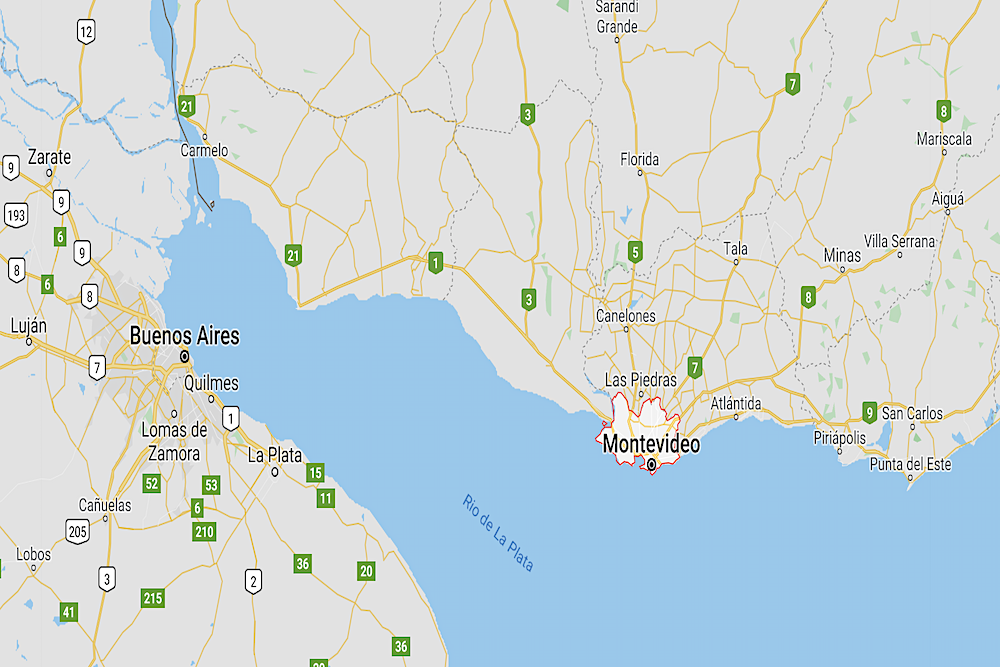
BUENOS AIRES
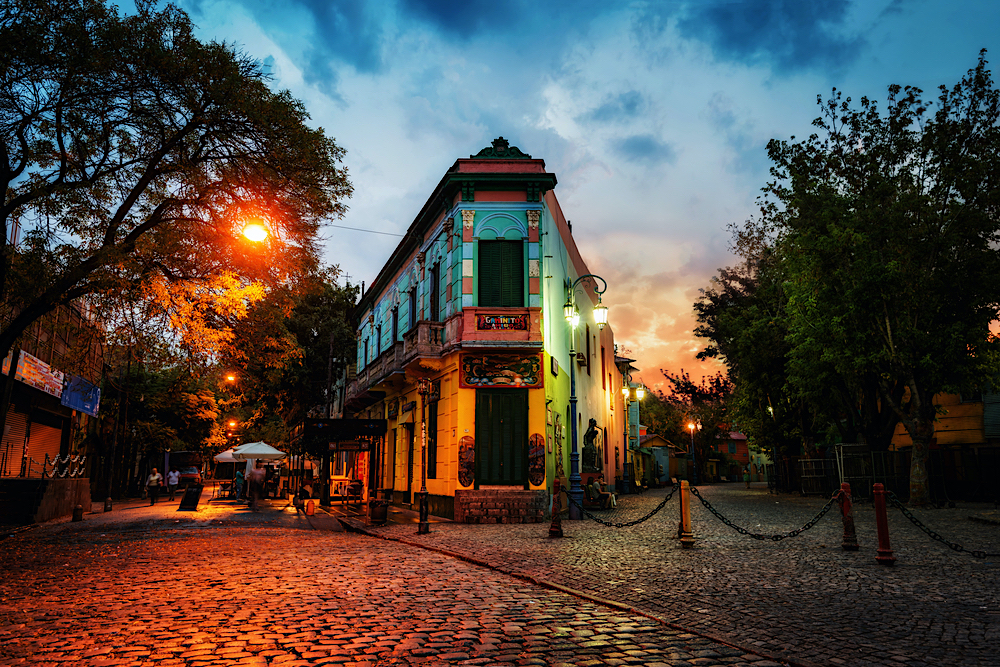
Buenos Aires is the capital and largest city of Argentina. The city is located on the western shore of the estuary of the Río de la Plata, on the South American continent's southeastern coast. "Buenos Aires" can be translated as "fair winds" or "good airs", the former was the meaning intended by the founders in the 16th century, by the use of the original name "Real de Nuestra Señora Santa María del Buen Ayre", named after the Madonna of Bonaria in Sardinia. Buenos Aires is packed with fantastic experiences, here are just a few:
1. CASA ROSADA
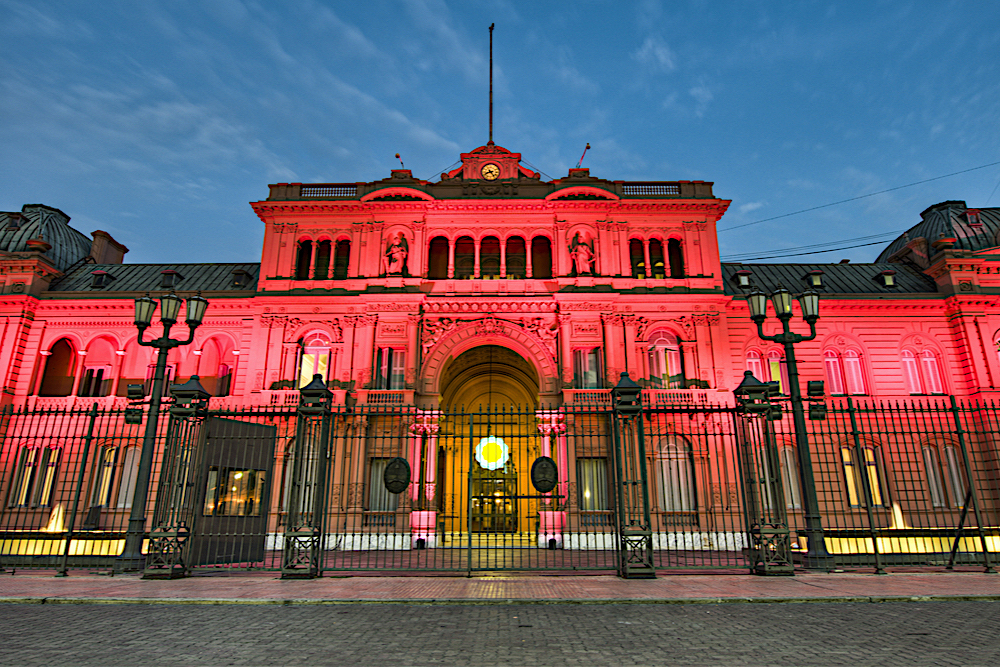
The Casa Rosada is the executive mansion and office of the President of Argentina. The palatial mansion is known officially as Casa de Gobierno. Normally, the President lives at the Quinta de Olivos, the official residence of the President of Argentina, which is located in Olivos, Greater Buenos Aires.
2. CEMENTARIO DE LA CHACARITA & RECOLETA
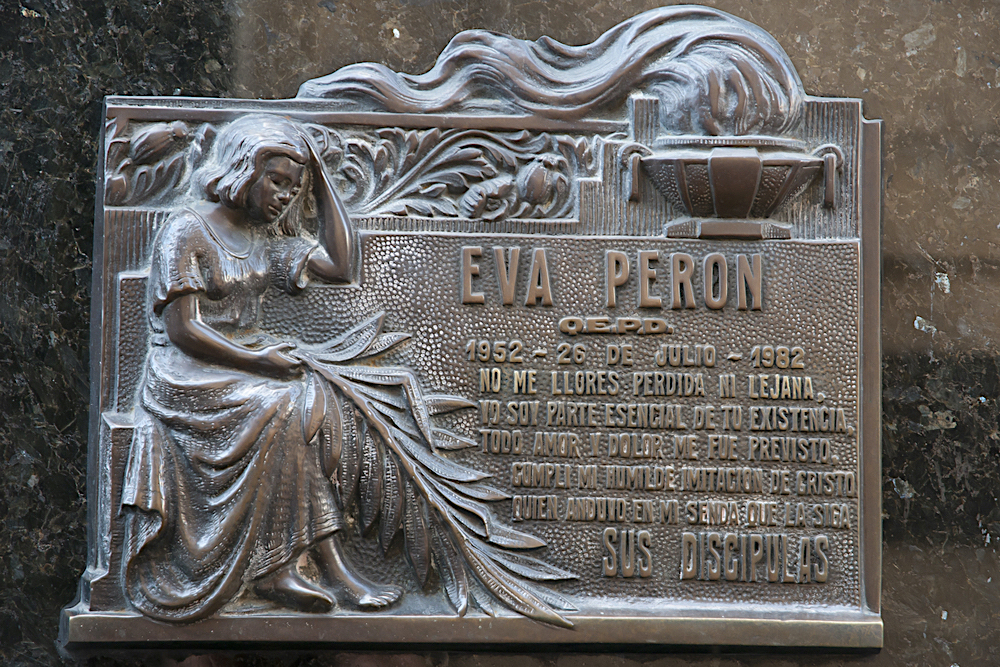
Tango singer Carlos Gardel is a national icon in Argentina. After his tragic death at the age of 45, he was interred at the Chacarita Cemetery, a vast necropolis in the suburbs of Buenos Aires, built in the 19th century after a yellow fever epidemic led to overcrowding of the existing cemeteries. La Recoleta Cemetery is a cemetery located in the Recoleta neighbourhood. It contains the graves of notable people, including Eva Perón, presidents of Argentina, Nobel Prize winners, the founder of the Argentine Navy, and a granddaughter of Napoleon.
3. EAT AT A PARRILLA
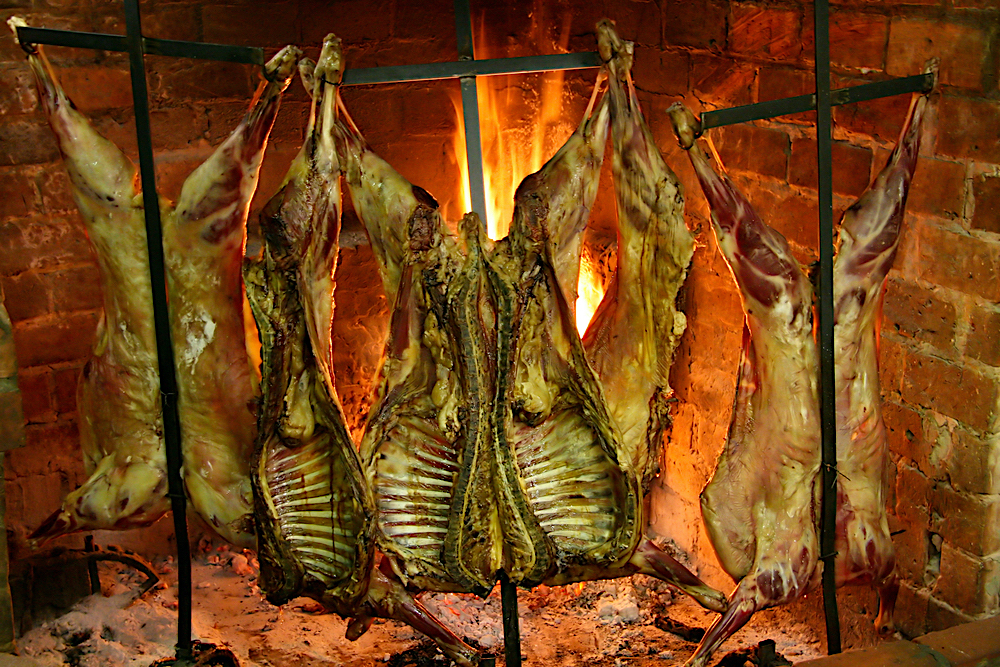
“Parrilla” means grill, and refers to the actual open-fire hearth and grates where meat is cooked. It also translates to “steakhouse,” or more fittingly, any establishment — from fine dining to street cart — that specializes in grilled meats. A meal or two at a parrilla is a must in Buenos Aires.
4. EL ATENEO GRAND SPLENDID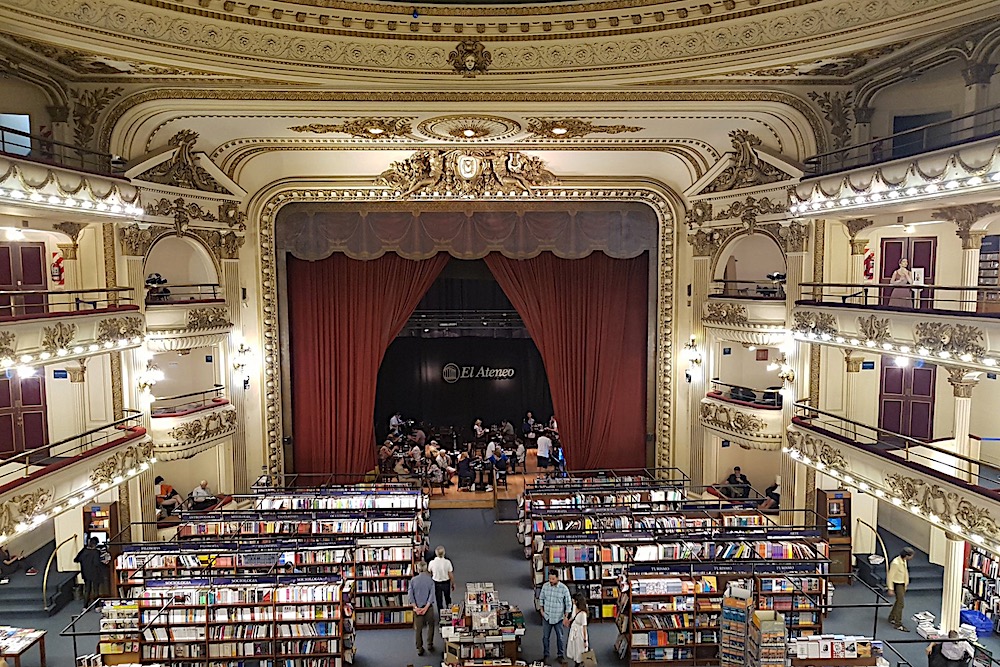
El Ateneo Grand Splendid is a bookshop in the Recoleta neighbourhood. In 2019, it was named the "world's most beautiful bookstore" by the National Geographic.
5. EL CAMINITO
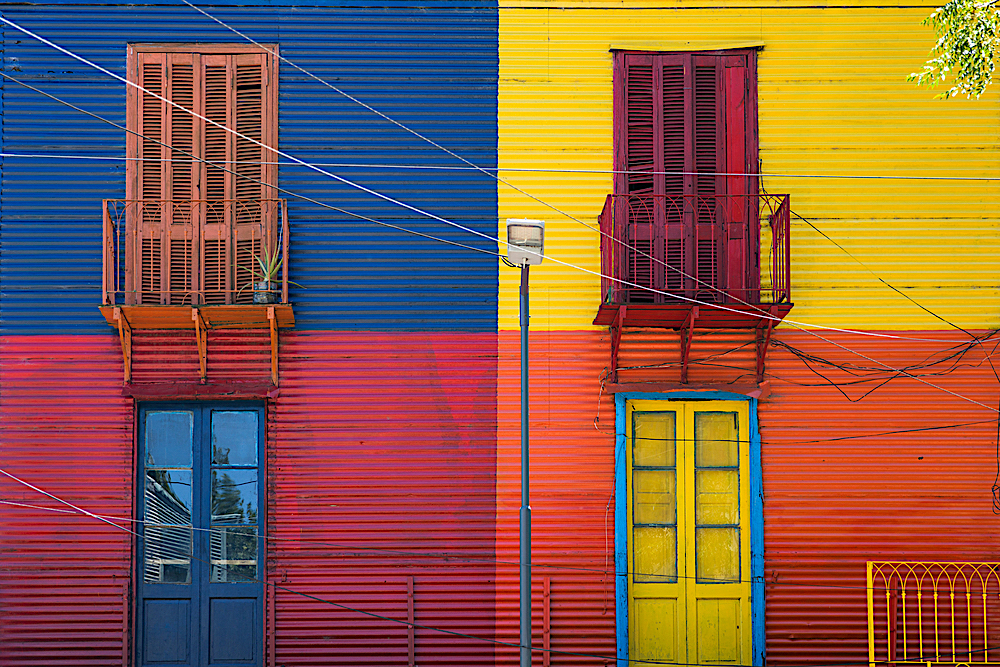
Caminito is a street museum and a traditional alley, located in La Boca, a neighborhood of Buenos Aires, Argentina. It acquired cultural significance because it inspired the music for the famous tango "Caminito", composed by Juan de Dios Filiberto.
6. LA BOMBONERA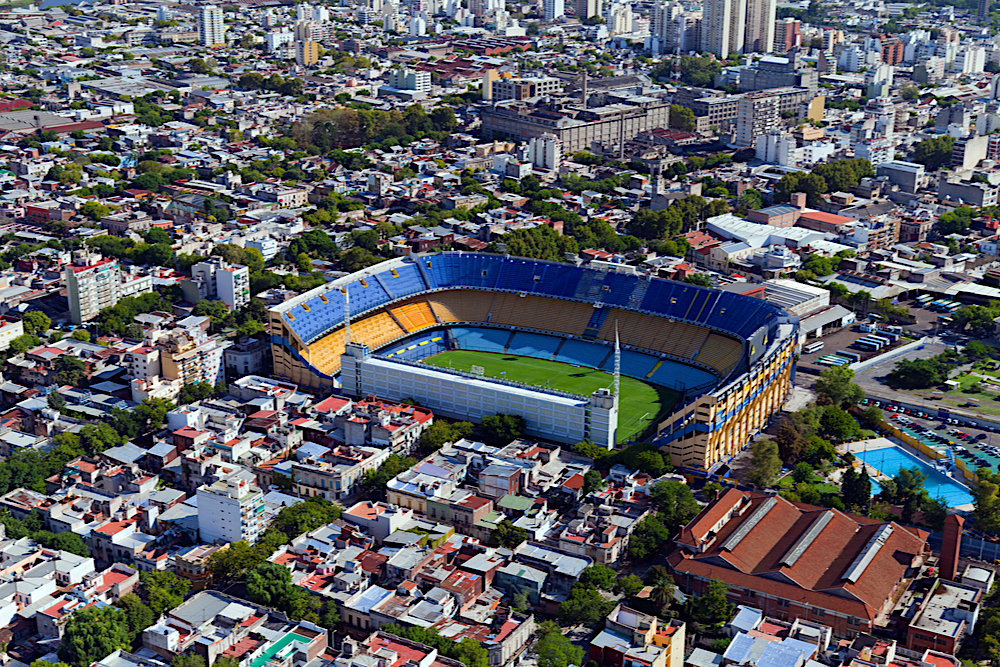
The Estadio Alberto J. Armando is an association football stadium located in La Boca district of Buenos Aires widely known as La Bombonera. It has a capacity of 49,000. The stadium is owned by Boca Juniors, one of Argentina's top football clubs. The stadium is widely regarded as one of the most emblematic stadiums of the world.The stadium, as well as being the home of Boca Juniors, who have over 16 million fans, is also used as a concert venue.
7. MALBA (Museo de Arte Latinoamericano de Buenos Aires)
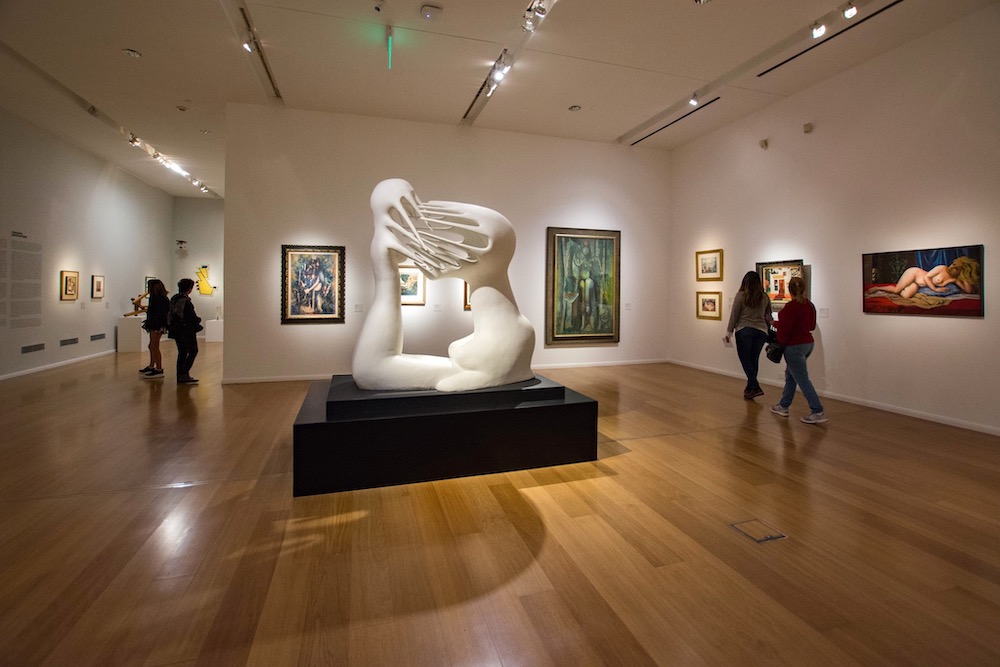
The Latin American Art Museum of Buenos Aires is a museum located on Figueroa Alcorta Avenue, in the Palermo section of Buenos Aires. Created by Argentine businessman Eduardo Costantini, the museum is operated by the not-for-profit Fundación MALBA – Costantini, and was inaugurated on September 21, 2001.
8. OBELISCO DE BUENOS AIRES & PLAZA DE MAYO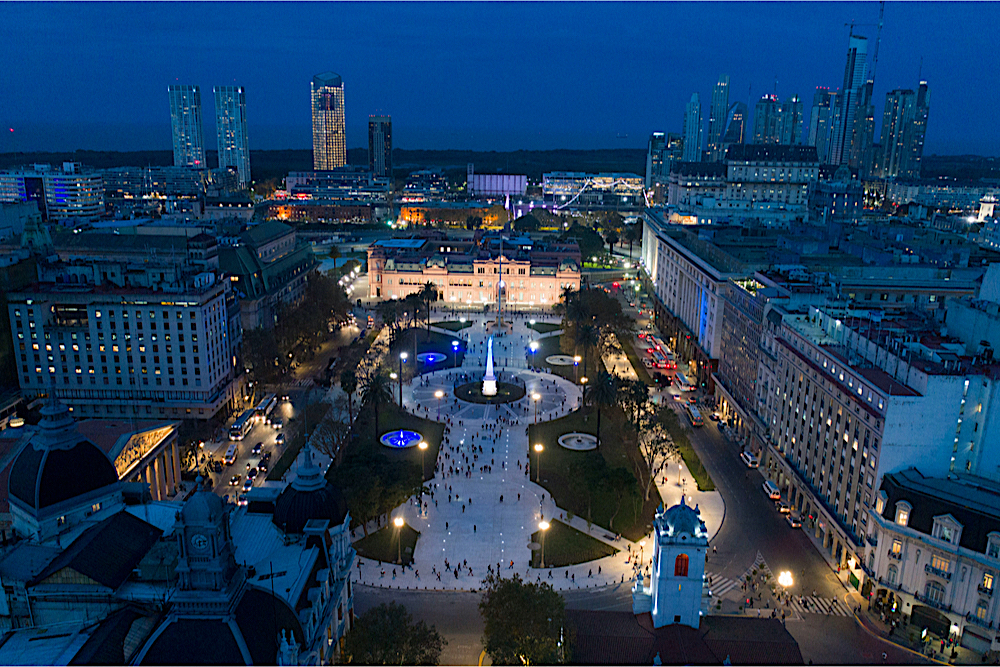
The Obelisco de Buenos Aires (Obelisk of Buenos Aires) is a national historic monument and icon of Buenos Aires. Located in the Plaza de la República in the intersection of avenues Corrientes and 9 de Julio, it was erected in 1936 to commemorate the quadricentennial of the first foundation of the city.
The Plaza de Mayo is widely considered to be the most important square in Argentina. The square takes its name from the 1810 May Revolution, which saw Buenos Aires declare itself independent from Spain, thus instigating the Argentine War of Independence.
9. TANGO
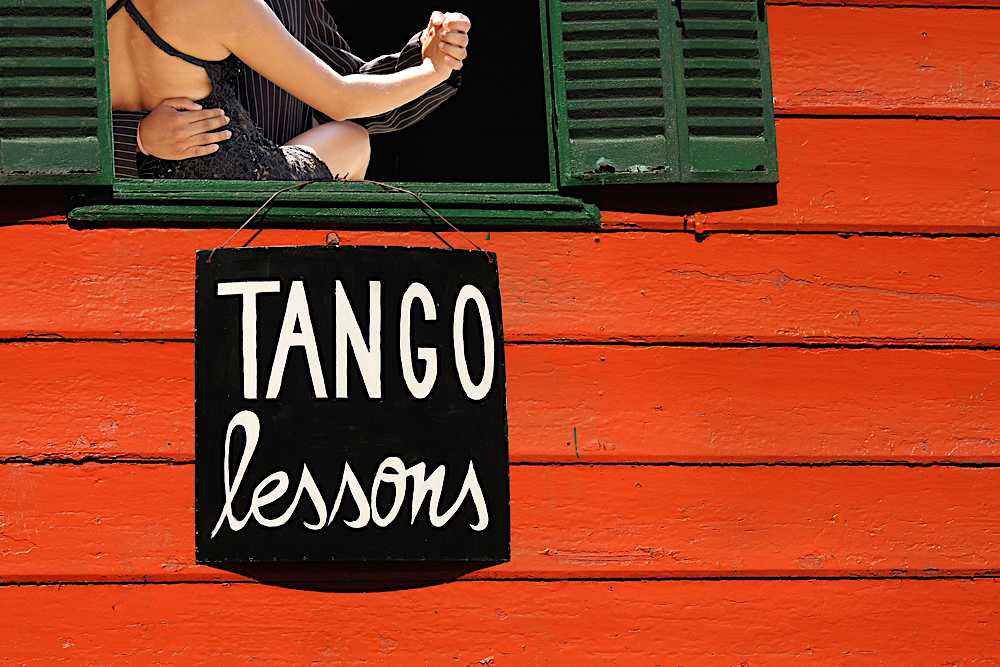
Tango is a partner dance, and social dance that originated in the 1880s along the Río de la Plata, the natural border between Argentina and Uruguay. It was born in the impoverished port areas of these countries, with enslaved Africans populations. The tango is the result of a combination of African Candombe Spanish-Cuban Habanera, and Argentinian Milonga. The tango was frequently practiced in the brothels and bars of ports, where business owners employed bands to entertain their patrons with music.
10. TEATRO COLÓN
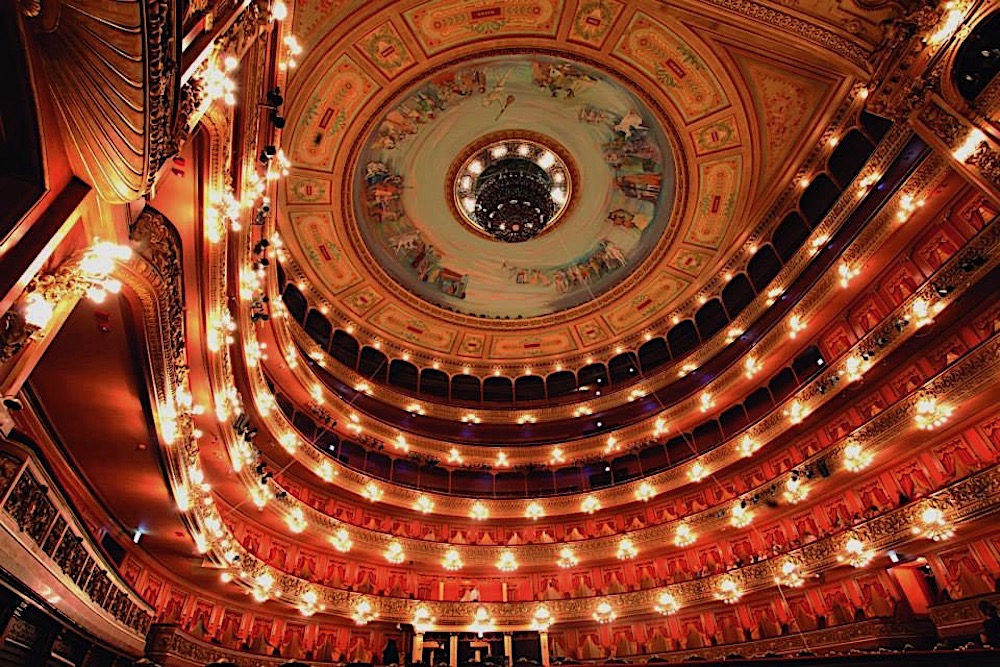
The Teatro Colón is the main opera house in Buenos Aires, Argentina. It is considered one of the ten best opera houses in the world by National Geographic, and is acoustically considered to be amongst the five best concert venues in the world. The present Colón replaced an original theatre which opened in 1857.
WHEN TO GO: The best time to visit Buenos Aires is from April-June (fall) or from September-December (spring). These sweet shoulder seasons usher in mild temperatures, thin crowds, and colorful foliage. Fall and spring also boast reasonable hotel prices.
VISAS: The citizens of 87 countries are allowed to enter Argentina without a visa, or “visa-free”. Visa-free countries include the United States, South Korea, Australia, Brazil, and Turkey. North America, most of Europe, parts of Asia, South Africa, and Australia are generally where visa-free countries are. If you are in Africa or Central Asia, you will most likely need a visa.
CURRENCY: Argentine Peso
LANGUAGE: Spanish
SLEEP AT PATIOS DE SAN TELMO
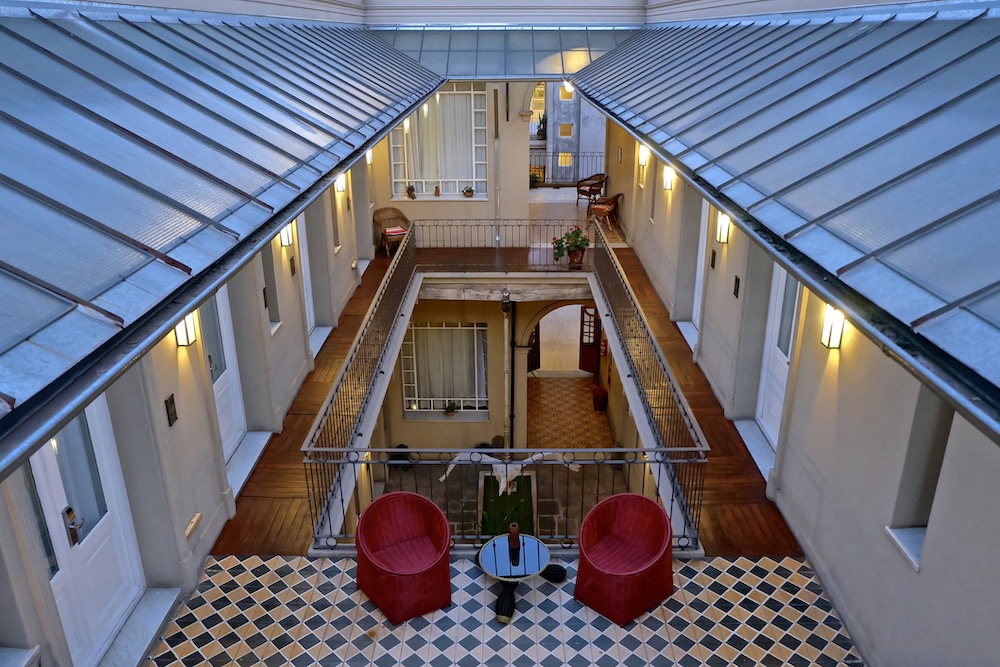
Patios de San Telmo brings to life a world apart. It is one of the terraced patios, a specially rich architecture, and sustainably-restored artisanal floors, it is an avant-garde place full of color and texture. Staying with them evokes a journey through the history of the city.
PLAY AT BIKING BUENOS AIRES
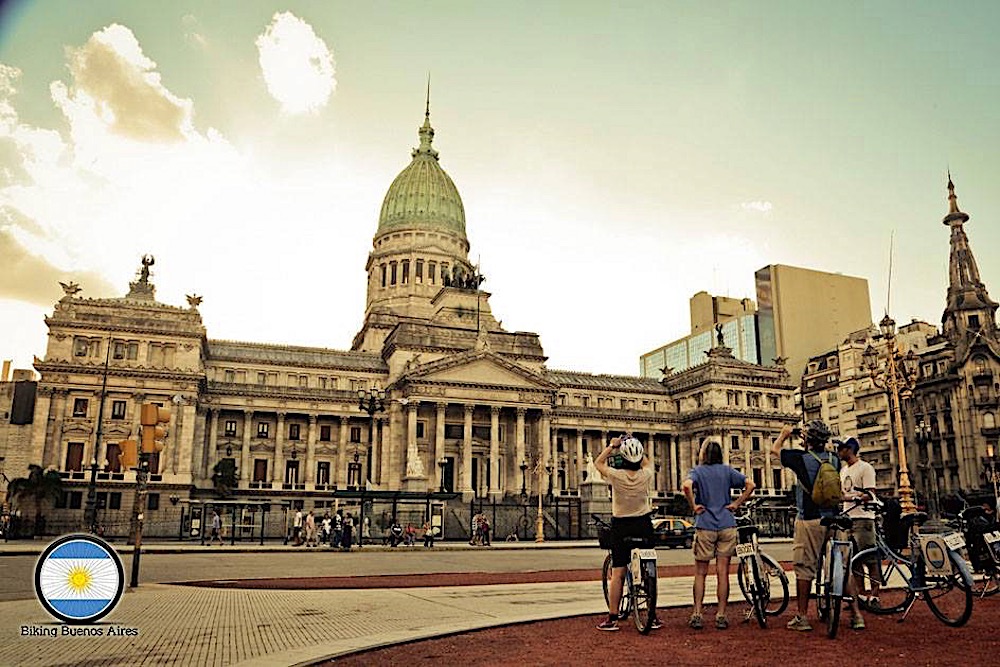
Much more than a bike tour! If you only have a few days to feel local, or if Buenos Aires seems a chaos of opportunities to you, choose Biking Buenos Aires.
PLAY AT BIKE N' WANDER EXPERIENCES
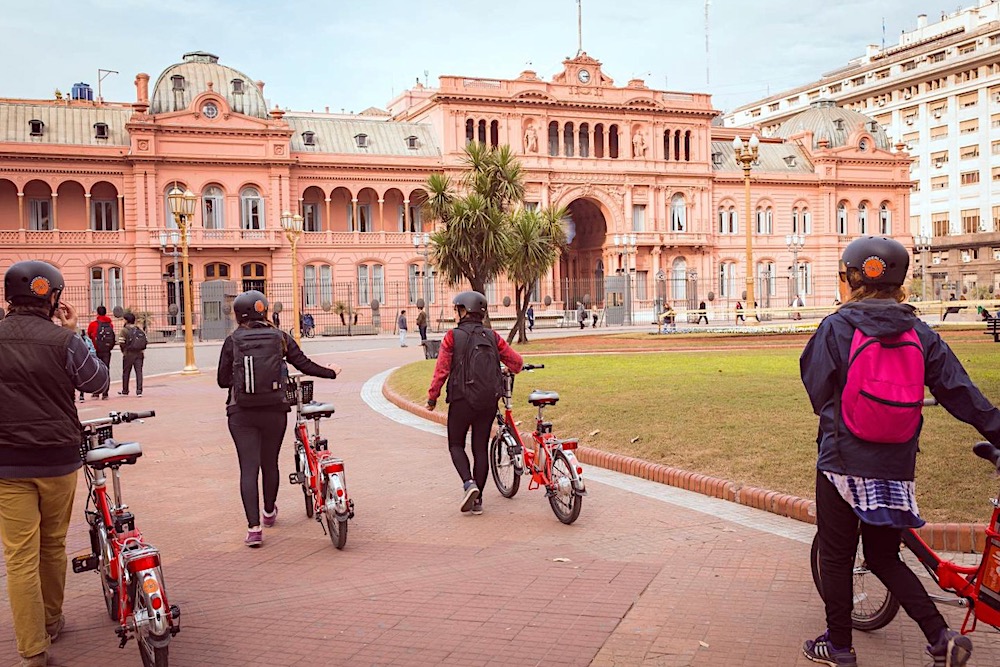
Get to know the whole city with no effort on electric bikes with knowledgeable local guides. Modern communication tools allow them to share more in real time about the places you visit as you pedal! A variety of tours and experiences fit for everyone.
PLAY & EAT AT CHIMICHURRI FOOD TOURS
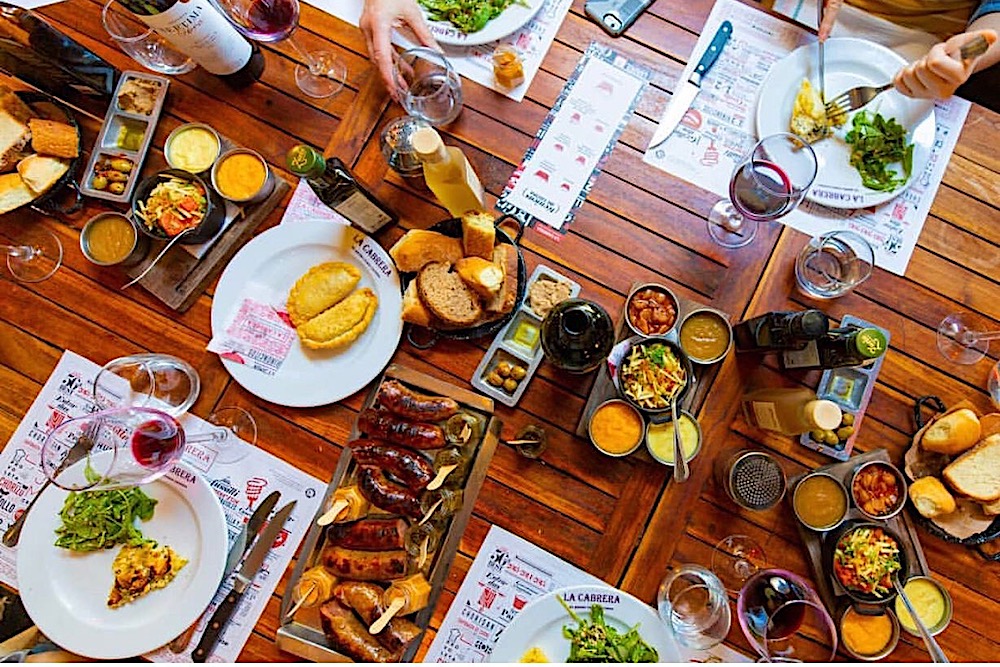
Chimichurri Food Tours visit the best gastronomic establishments of Buenos Aires explaining the history of the dishes, their ingredients, their characteristics and history. At each stop there will be a tasting prepared by each owner of the premises.
PLAY AT ICONIC BUENOS AIRES
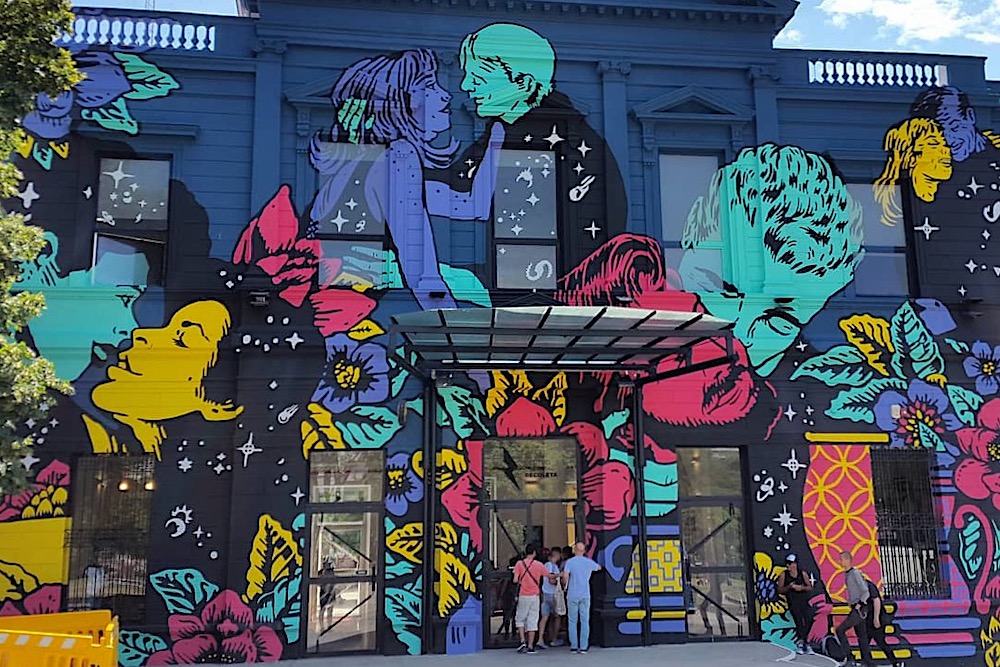
Iconic Buenos Aires offers Private City Tours, Delta of Tigre, Gaucho Day, Foodie Buenos Aires and more. Explore Buenos Aires with their friendly, experienced and fluent English speaking guides.
PLAY & EAT AT SHERPA FOOD TOURS
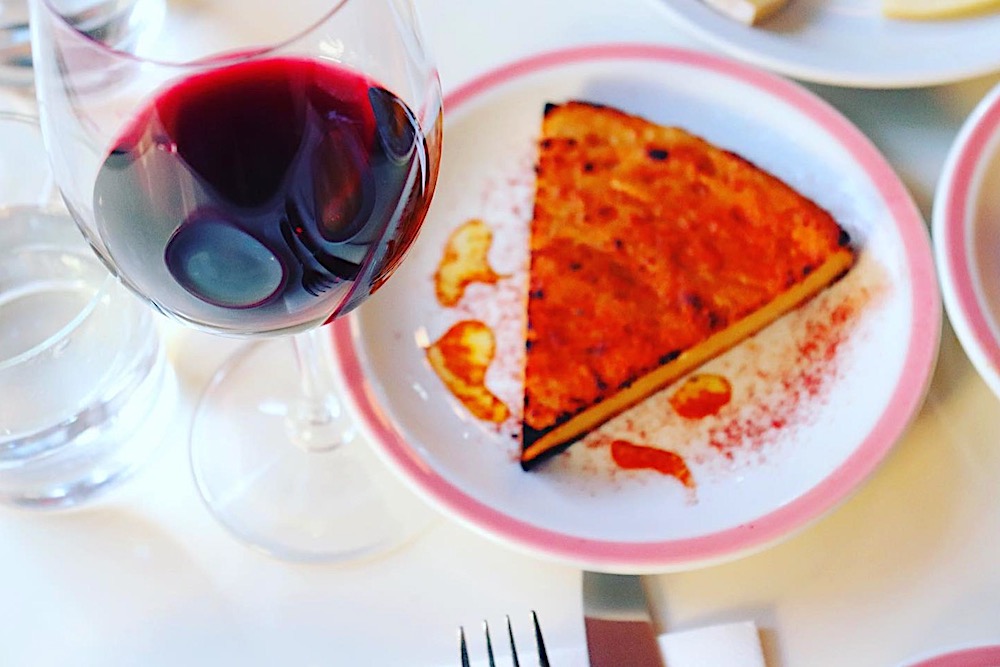
Sherpa Food Tours purpose is to showcase Argentina’s flavours and history in unique, fun and collective experiences. They understand that the best way to experience any culture is through amazing food, stunning locations and lovely company. They create meaningful and sustainable experience that support the local community.
Next week we continue our adventure and explore Montevideo & Punta del Este in Uruguay!
STAY SAFE & EXPLORE 1 300 EXPERIENCES IN 115 COUNTRIES AND PLAN YOUR ADVENTURE OF A LIFETIME AT BLOG
